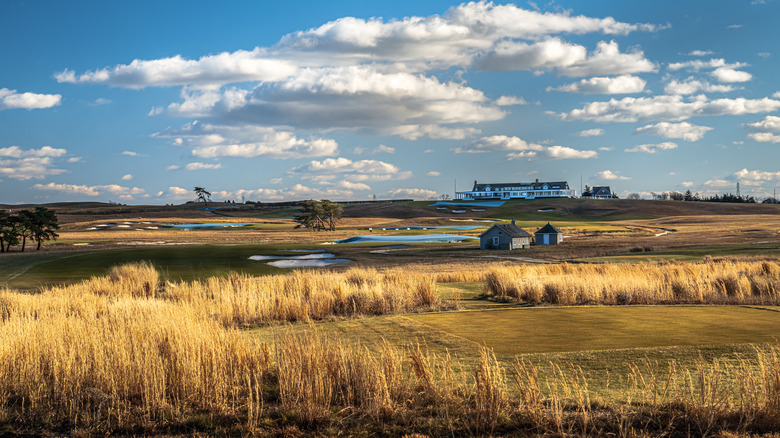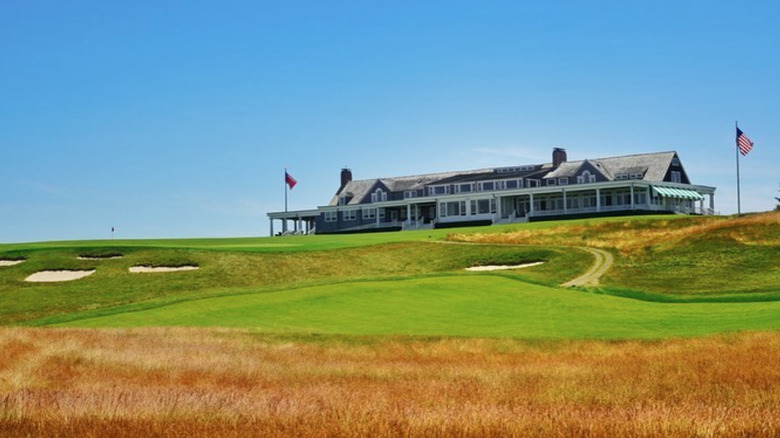One Of America's Most Historic Golf Courses Is A Challenging New York Gem Where Legends Are Forged
When you look back at the earliest records of golf in America, you'll find Shinnecock Hills. Shinnecock is the single oldest incorporated golf club in the United States and one of the first five founding USGA clubs. Dating back to 1891, this historic track has long been on the bucket lists of golfers around the world and has been regularly listed as one of the top tracks in all of America by the likes of Golf Digest, Golf magazine, and Golfweek. The Southampton, New York, golf haven sits in a tiny golf hotbed of courses, next door to Sebonack Golf Club and another premier New York course steeped in tradition known as "The National."
Though there have been many restorations of the grounds and routing at Shinnecock over the past century, much of the course's original character from Scottish designer Willie Davis and architect William Flynn, who improved the course in 1931. The timeless beauty of the land along the beachy shores of Long Island continues to make Shinnecock stand out nationally. With Shinnecock being the host of several epic USGA championships already (and more on the horizon), more legends in golf history will continue to be forged here.
A history of legends on the grounds at Shinnecock Hills
Dating back to the course's inception in the late 19th century, legends and early figureheads of the game have graced the grounds at Shinnecock. The second U.S. Open ever contested was at Shinnecock, won by Scottish-American James Foulis in 1896. After a nearly century lay-off from championships, the course began a storied run of hosting the U.S. Open championships. World Golf Hall of Fame member Raymond Floyd became one of the oldest major champions at 43 years old with his win in 1986, and Corey Pavin's 4-wood hit of a lifetime in 1995 led to his win is cemented as one of the great U.S. Open approach shots in championship history.
The test of successfully navigating Shinnecock has been reimagined with its recent restorations. In an effort to take Shinnecock back to more of the course's original roots following a brutally difficult U.S. Open in 2004, the 2016 restoration widened the club's fairways and created more real estate on some greens. Modern contests following the redesign, like the 2026 U.S. Open Championship and the 2036 U.S. men's and women's Open Championships, play on a version of the course that's closer to what William Flynn designed back in the 1930s.
The 18-hole challenge of a major championship venue
What is said to be the oldest clubhouse in America is perched atop a hill as you arrive at Shinnecock. Curious visitors will want to check out the posh members' list of handicaps for any famous names on the notice board. On the day's tee sheet, you're just as likely to spot a celebrity as you would be in New York City.
Stepping out onto the course, your local club caddy for the day will be your best ally to guide you around one of the trickier tests in golf. This gem of a course plays at a modest yardage of just over 6,300 yards from the medal tees. Don't be fooled though — these holes are stretched tremendously in yardage when the U.S. Open comes around.
The wind and course conditions help make the challenge each day, but Shinnecock does not hide much off of the tee. Blind shots are few and far between, but what you will see are lots of obstacles ahead. On either side of the mostly doglegged fairways is tall biting fescue grass that is commonly knee-high. Bunkering is detailed across the routing, much like some of the most spectacular courses in Europe, but at Shinnecock Hills, the opportunity to run up an approach shot to the putting surface is often unavailable. Many players commend the one-shot par-threes on the course — hole 11 in particular is one of the most photographed spots as the hilltop clubhouse looms in the background. If you're lucky enough to experience the historic Shinnecock test alongside a member, your day will finish in the clubhouse overlooking a piece of golf history.


